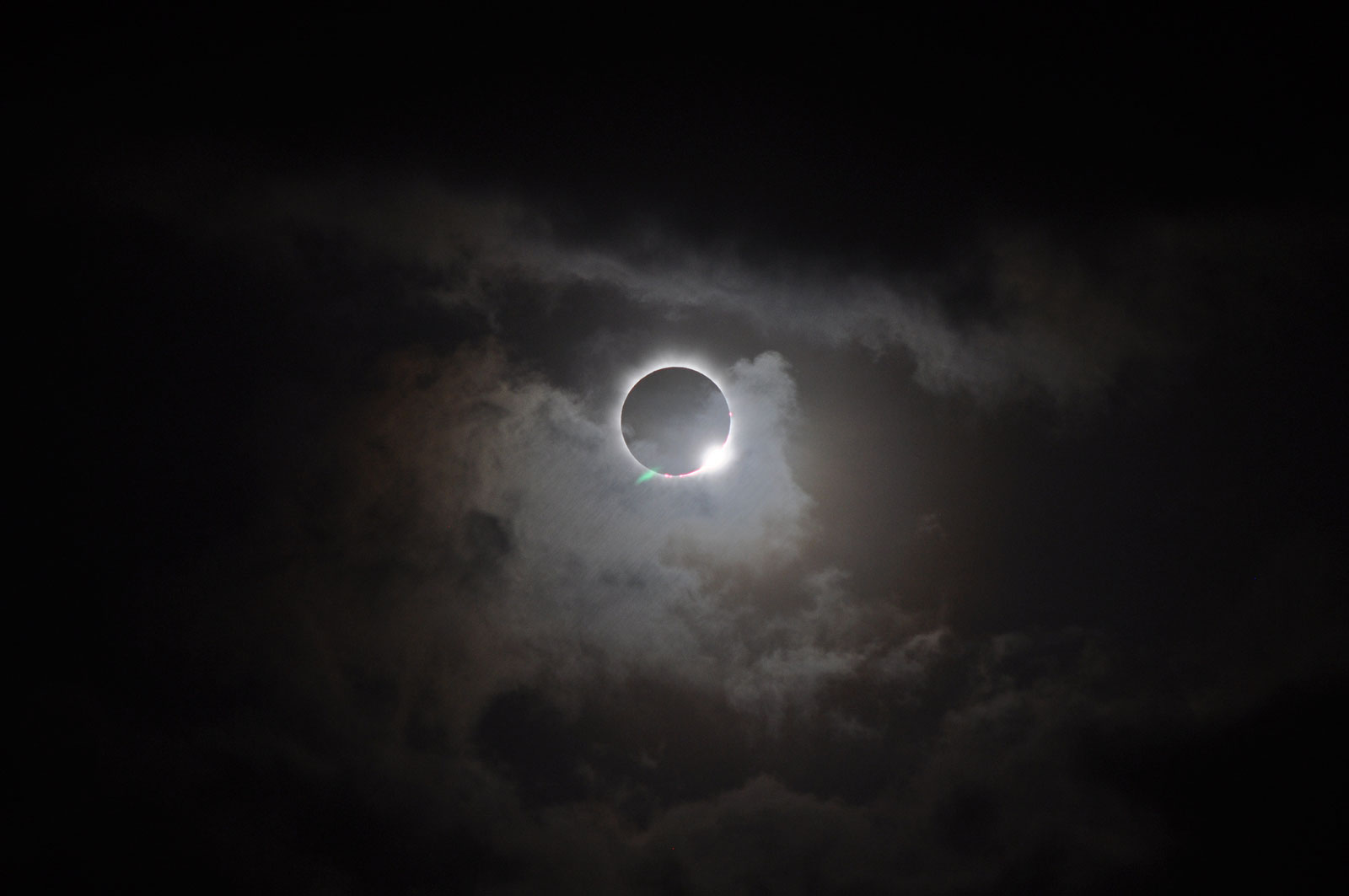The Local newsletter is your free, daily guide to life in Colorado. For locals, by locals.
Boulder science journalist David Baron is a self-described umbraphile, aka someone who loves eclipses. He has not only traveled around the world to see five total solar eclipses—a rare event where the moon moves between the Earth and the sun, obscuring its view and casting a shadow on the Earth below—but earlier this summer, he published a book on the phenomenon, American Eclipse: A Nation’s Epic Race to Catch the Shadow of the Moon and Win the Glory of the World.
Baron, like millions of Americans, is prepping to view his sixth total solar eclipse on August 21, when the “path of totality” will move across the country. Whether, like him, you’ve scheduled your viewing of the Great American Eclipse well in advance, or you’re just now considering it, here are five tips from Baron on what you should know before you finalize your plans.

Tip No. 1: Decide what you want to see—a partial or total eclipse.
On August 21, all of North America, including Mexico and Canada, will see a partial eclipse. To see the total solar eclipse, you must be in the path of totality, which is a 70-mile-wide, 3,000-mile-long zone over which the darkest part of the moon’s shadow falls. “The zone of partial eclipse is enormous,” says Baron, “but the zone of total eclipse is really narrow.”
In Denver, we can expect about a 92 percent eclipse. (Check out this interactive from Vox to find out what to expect in your zip code.) That may seem significant, but Baron says the difference between a total and partial eclipse is—excuse the pun—night and day.
“You would think that when it comes to an eclipse that the gradations are all gradual,” says Baron. “That a 10 percent eclipse isn’t as good as a 20 percent eclipse. That a 20 percent eclipse is half as good as a 40 percent eclipse. And a 90 percent eclipse, hell, that’s 90 percent as good as a total eclipse. The answer is no. It is a fundamentally different experience if you’re in the path versus outside.
“Even a 99 percent partial eclipse, which is just outside the path of totality, is nothing compared with what you’ll experience if you’re in the path.”
Tip No. 2: Protect your eyes.
“First of all, anyone, anywhere, on August 21 really should get themselves a pair of eclipse glasses, which don’t cost a lot of money. You can get them for a couple dollars,” Baron says. “They just have cardboard frames and extremely dark filters where lenses would be that filter out all but a tiny fraction of the sunlight.”
Without glasses, you will not be able to safely view the partial eclipse. If you’re in the Denver area, you’ll need them for the entire event. But don’t think you won’t need them if you’re in the path of totality, says Baron—any time any portion of the sun’s surface is visible, it isn’t safe to look at the sun with the naked eye. Since the totality will last about two minutes depending on your location, you’ll be spending a lot of time waiting around under partial eclipse skies. However, during totality—even though the sun’s corona will still be visible—Baron encourages viewers to take off the glasses so you don’t miss the best part of the show.
Bonus tip from Baron? Remember a sun hat. “Even though you’re going to watch the sun disappear, it’s going to be out most of the day.”
Tip No. 3: At this point, finding lodging will be difficult.
Even though some places have slightly better odds of clear skies, says Baron, anywhere in the path of totality that Coloradans can easily drive to—Idaho, Wyoming, or Nebraska—will be a good choice for viewing. However, at this late date, don’t expect to find lodging. (Baron reserved his hotel in Jackson Hole, Wyoming, three years ago.)
“For those who are going to the path of totality, at this point, the odds of finding a hotel anywhere in the path is virtually zero,” he says. “The odds of finding a campground space in the path is pretty much zero.”
Your options? Camp out on BLM land, or just drive up and back for the day.
Tip No. 4: Making the drive for the day? Be ready for anything.
“Be as self sufficient as possible,” says Baron, “because traffic is going to be epic. Gas stations might run out of fuel. Make sure you’ve topped off your gas tank, you’ve got all the water, all the food you would need all day. Bring toilet paper and a first-aid kit. You don’t know where you’re going to be. I mean, seriously, you might be out somewhere in the middle of nowhere for quite a few hours.”
Towns in the path of totality, he adds, are going to be completely overwhelmed.
“They are preparing for this as if this is some sort of natural disaster,” he says. “They seriously have basically taken out their emergency plans for how to deal with mass evacuation, or you know if suddenly the hospital is overrun with people. They’re doing their best, but expect that you may be on your own for more time than you would expect.”
Tip No. 5: Don’t plan to Instagram.
Baron laughs when asked about social media, but he does emphasize that your cell phone may not be your best travel companion on Aug. 21.“You might try [Instagram], but don’t be surprised if you can’t get through on your cell provider,” he says. “Cell service may not work because the cell towers may be completely overwhelmed.
“Be prepared to be on your own all day—and be awed.”








